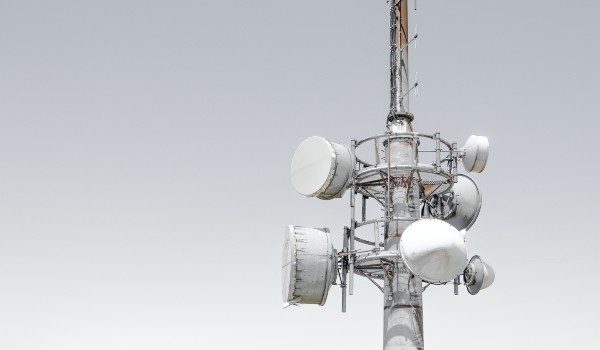5 min read
6 Ways 5G is Transforming Automotive Transport
By: Gemma Lutwyche on Aug 25, 2021 11:23:13 AM

The automotive industry is speeding towards 5G connectivity, with next generation mobile networks designed to support smart transport.
Technology for automated cars is advancing rapidly, with performance doubling approximately every 16 months. However, high-level autonomy depends on minimal latency (the delay between the sending and receiving of information), and maximum reliability, which is best achieved with 5G.
It has excellent coverage, high speed, and low latency - all of which are vital for Vehicle-to-Everything (V2X) communication and telematics.
Below are ways 6 ways that 5G is unlocking the potential of connected and automated mobility (CAM):
-
Telecommunications
The number of 5G connected cars is predicted to grow from 15% to 74% by 2023, with many leading car brands merging with networking services to utilize the Internet of Things (IoT) in their vehicles.
For example, BMW is working with Samsung to equip its autonomous iNext model with 5G, which is supposedly being built this year.
The 5G Automotive Association (5GAA) is leading the move to 5G transport by connecting telecommunications with the automotive industry. Founding members include Audi, Intel, BMW, Huawei, and Nokia, who are committed to working together to develop Cellular Vehicle-to-Everything (C-V2X) technology.
Telefónica recently partnered up with Nokia to work on an ambitious project called The Cereixal Tunnel. It involved fitting a tunnel with 5G and C-V2X communications to issue out warnings and alerts to vehicles, bringing us a step closer to establishing smart infrastructure.
-
Intelligent Road Transport System
Cellular 5G and IoT technology are expected to be initially deployed in urban areas, requiring an Intelligent Road Transport System to support interconnectivity.
5G vehicle sensors and radars will play an integral part in reducing congestion by providing real-time travel updates to drivers and traffic management systems.
Data can be used by authorities to manage traffic most effectively, especially during major events and peak times. The UKs first 5G connected Road Sensor Network will be trialled in the West Midlands, using 5G sensors and cameras to relay live information to the regional control centre. It will then be able to divert vehicles and issue instant road warnings to improve traffic flow.

-
Data Transmission Speed
5G sensors can also make driving safer by providing safety information before it is visible or noticeable by the driver, which plays a big role in emergency situations where quick responses to danger are crucial.
5G has a data transmission speed of 1 to 5 milliseconds, whereas 4G takes far longer at 20 to 30 milliseconds, which indicates that 5G is better suited for Advanced Driver Assistant-Systems (ADAS) in automated vehicles.
-
Fuel-Efficiency
Additionally, fuel efficiency can be improved with 5G sensors that send maintenance data to a vehicle’s manufacturer. For example, sensors can identify when the brake pads are wearing thin and need replacing, optimising performance and reducing emissions.
5G sensors do however use up a lot of energy, but carbon emissions can be reduced if automated vehicles are powered by electric batteries.
Read More:
What role will sand-casting play in future transportation?
EV components: surviving the valley of death
4 ways sand casting supports electric vehicle manufacturing
-
Cloud Systems
All of the data acquired from 5G connected vehicles are creating a demand for cloud systems that can handle large amounts of data. Software companies like Microsoft are increasingly becoming involved in the automotive industry, using IoT and edge-computing technology to form a cloud system that connects cars to 5G mobility services.
Ford has integrated their Services Network with Microsoft’s cloud computing service Azure, with the hope of providing automated software updates using the cloud instead of having to go to dealerships for software adjustments.
-
Smart Manufacturing
Manufacturers are using 5G connectivity to improve production systems. Collaborating with telecommunication operators and software companies, manufacturers are utilizing automation, artificial intelligence and the IoT to build vehicles more easily.
The Swedish telecom company, Ericsson, has teamed up with Telefónica Germany to use 5G in Mercedes-Benz’s new car production plant. 5G’s short latency time and ability to collect large amounts of data will increase precision and efficiency in the manufacturing process.
Also, Ford is installing a 5G private network by Vodafone Business in their new E: PriME (Electrified Powertrain in Manufacturing Engineering) facility, using 5G to reduce delays, improve reliability, and quicken deployment time.
Overview
5G is bringing telecommunications, software developers, and vehicle manufacturers together to pave the way for smarter mobility and greater connectivity.
As a result, 5G is transforming the automotive industry in a way that will revolutionise the way we interact with our surroundings.
Want to read more about innovative transport? Read our latest ebook, Making EV Components with Sand Casting by clicking on the button below.
Related Posts
Innovations in Energy for Transport
Vehicles are responsible for roughly a quarter of CO2 emissions globally, with transport emitting...
3 Key Future Trends of Automated Transport
Make no mistake, we are facing an automated future. It is predicted that by 2050, almost all...
How will Giga Casting Transform the Automotive Industry?
Giga casting is transforming the automotive industry. Significant investment by Tesla has...
 Get in touch
Get in touch
